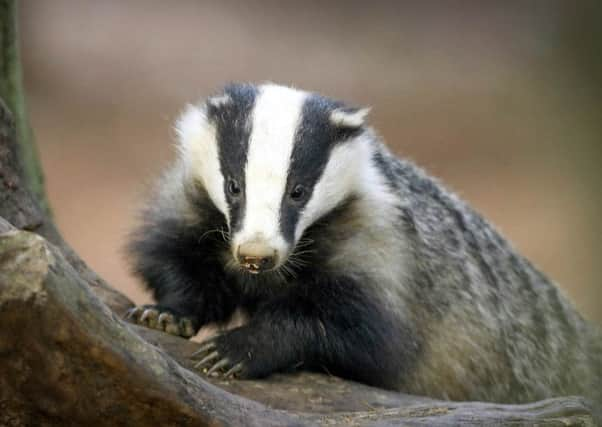Doubts over effectiveness of small scale badger culls


The findings are likely to be a blow to those looking to find an alternative to large-scale culling of badgers to tackle TB following two controversial pilot culls in Gloucestershire and Somerset last year.
The six-week culls in England, which a long-term “randomised badger culling trial” showed could reduce infection in herds, were deemed “ineffective” earlier this year by an independent panel appointed by the Department for Environment, Food and Rural Affairs with the number of badgers killed falling short of targets set to limit spread of the disease to cattle.
Advertisement
Hide AdAdvertisement
Hide AdThe new bovine TB control strategy in Northern Ireland will involve a different approach to the culls in England. Live tests on badgers will aim to see vaccinations administered to healthy animals and infected ones culled - a method known as test-vaccinate/remove (TVR).
But researchers from the Zoological Society of London (ZSL), Imperial College London and the University of Sheffield have predicted the impact of the TVR pilot in Northern Ireland using data from the randomised badger culling trial. The results, published in the journal Proceedings of the National Academy of Sciences, showed that removing a small number of badgers from a social group led to increased dispersal and wider ranging of the remaining animals.
Professor Rosie Woodroffe, senior research fellow at ZSL, said: “TVR sounds appealing because only infected badgers are killed. Unfortunately our findings suggest that the planned TVR pilot could alter badger behaviour in ways which risk exacerbating the bovine TB problem, rather than controlling it.”
The scientists have recommended that if the Northern Ireland pilot goes ahead, there needs to be intensive monitoring of badger behaviour and there must be rules to stop the programme if significant changes to social groups are observed.
Advertisement
Hide AdAdvertisement
Hide AdDr Jon Bielby, research fellow at ZSL, said: “The results reinforce the need to fully understand the consequences of methods to control the spread of bovine TB before we embark on them. Otherwise we risk complicating what is already a very complex issue.”
Richard Potts, livestock adviser for the National Farmers’ Union (NFU) in Yorkshire and the North East, said culling alone was not the only answer to halting the spread of bovine TB.
“The NFU has always said that we must use all options available to us to control and eradicate bovine TB. These options include strengthened cattle movement controls, vaccination of both badgers and cattle when available and practical, improved biosecurity and, in areas where the disease is endemic, the control of the reservoir of disease in wildlife.
“Our focus has always been the eradication of bovine TB and we have never said that culling alone is the only way to achieve this. But if we are ever going to get on top of the disease in areas where it is rife it must be tackled in wildlife as well as in cattle or else reinfection will continue to occur.
Advertisement
Hide AdAdvertisement
Hide Ad“Farmers in the North East have welcomed the government’s recently published 25-year TB eradication strategy, which for essentially TB free areas like ours focuses on keeping the disease out through a range of measures including risk based trading and increased pre and post movement testing.
“That said, until the disease is brought under control in the hotspot areas our cattle and wildlife will continue to be at risk.”